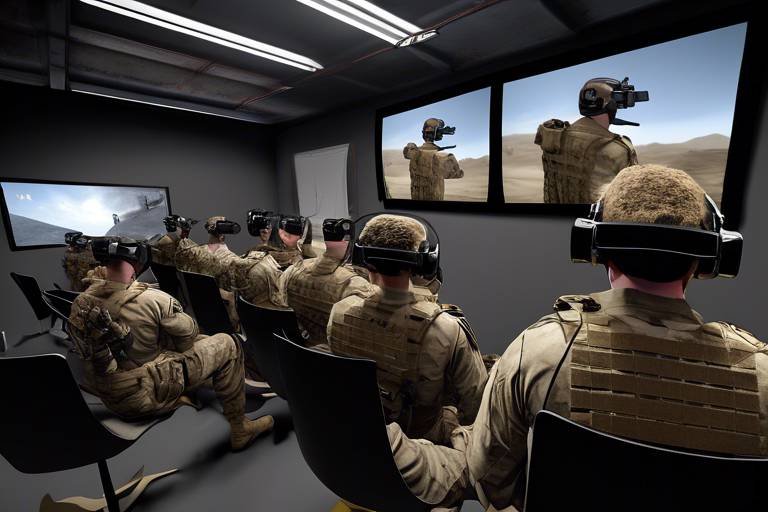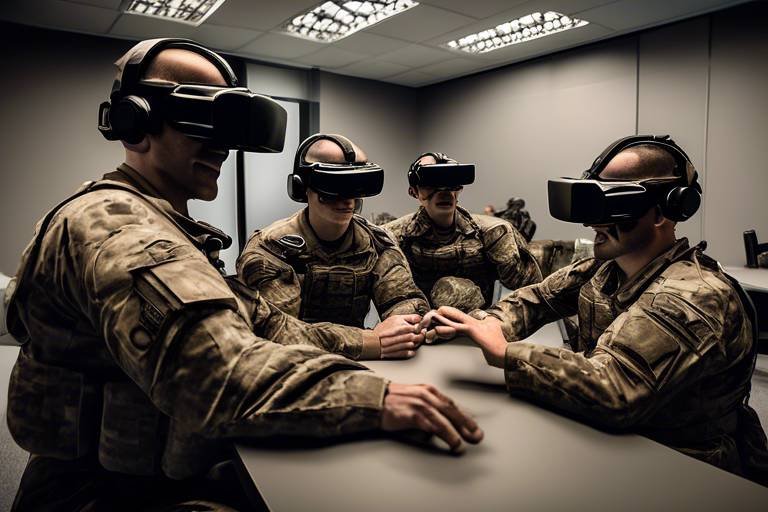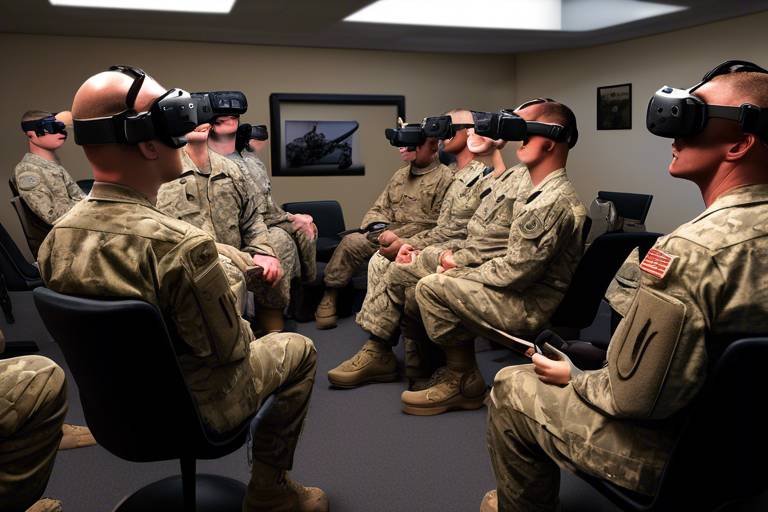Exploring Collaborative VR Training Environments for Military Teams
In today's rapidly evolving technological landscape, the military is embracing innovative training methods to enhance operational efficiency and effectiveness. One of the most groundbreaking advancements is the use of virtual reality (VR) for military training. This immersive technology allows teams to engage in realistic simulations that replicate high-pressure scenarios they might face in the field. By stepping into a virtual environment, soldiers can develop their teamwork, decision-making, and tactical skills in a safe yet challenging context.
Imagine a group of soldiers preparing for a mission. Instead of the traditional classroom setting or live exercises that can be costly and risky, they don VR headsets, instantly transported to a lifelike battlefield. The sights and sounds of the environment are strikingly real, allowing them to practice their roles and responsibilities as if they were on an actual mission. This not only enhances their readiness but also builds camaraderie among team members, fostering a sense of unity that is crucial for success in real-world operations.
The potential of VR extends beyond just individual skills; it significantly enhances team dynamics. In a collaborative VR environment, soldiers can communicate and strategize in real-time, simulating the pressures of combat situations. This practice helps them develop effective communication skills and trust in one another, which are essential for mission success. Moreover, the immersive nature of VR allows for experimentation with different tactics and strategies without the fear of real-world consequences, leading to more creative and effective solutions.
Furthermore, the ability to replicate various environments—from urban landscapes to rugged terrains—means that military teams can train for a wide range of scenarios. The use of 3D modeling techniques plays a crucial role in this process, creating lifelike simulations that closely mirror actual military operations. Soldiers can engage in tactical exercises that are not only realistic but also tailored to their specific needs and objectives.
As we delve deeper into the world of collaborative VR training environments for military teams, it becomes clear that the benefits are vast. However, like any innovative approach, there are challenges to address. The military must navigate technological limitations, cost considerations, and the need for comprehensive training for both instructors and participants. By overcoming these hurdles, the military can fully harness the power of VR to transform training and enhance operational readiness.
Virtual reality offers immersive experiences that can significantly improve training outcomes. By providing a controlled yet realistic environment, military teams can practice essential skills while minimizing the risks and costs associated with traditional training methods. The advantages of VR in military training include:
- Enhanced Realism: VR creates lifelike scenarios that closely mimic real-life situations, allowing soldiers to experience the pressures of combat without the associated dangers.
- Cost-Effective Training: While the initial investment in VR technology may be high, the long-term savings from reduced physical training costs and fewer injuries can be substantial.
- Flexible Training Modules: VR scenarios can be easily adapted to meet the specific needs of different military units, ensuring that training remains relevant and effective.
- Immediate Feedback: Soldiers can receive instant evaluations of their performance, allowing for rapid improvement and skill refinement.
Despite its many benefits, the adoption of VR in military training is not without its challenges. Some of the most pressing issues include:
- Technical Limitations: VR technology can be prone to glitches and may require ongoing maintenance and updates to function correctly.
- High Initial Costs: The upfront investment in VR equipment and software can be substantial, posing a barrier for some military organizations.
- Training for Instructors: Effective use of VR requires instructors to be well-versed in the technology and its applications, necessitating additional training and resources.
1. How does VR improve military training?
VR enhances military training by providing immersive, realistic environments where soldiers can practice their skills without real-world risks.
2. What are the main challenges of implementing VR in military training?
Key challenges include technical limitations, high initial costs, and the need for trained instructors to effectively utilize the technology.
3. Can VR training be customized for different military units?
Yes, VR scenarios can be tailored to meet the specific training needs and objectives of various military units, enhancing their relevance and effectiveness.
4. What role does feedback play in VR training?
Feedback mechanisms in VR provide immediate evaluations of performance, helping soldiers identify areas for improvement and refine their skills quickly.
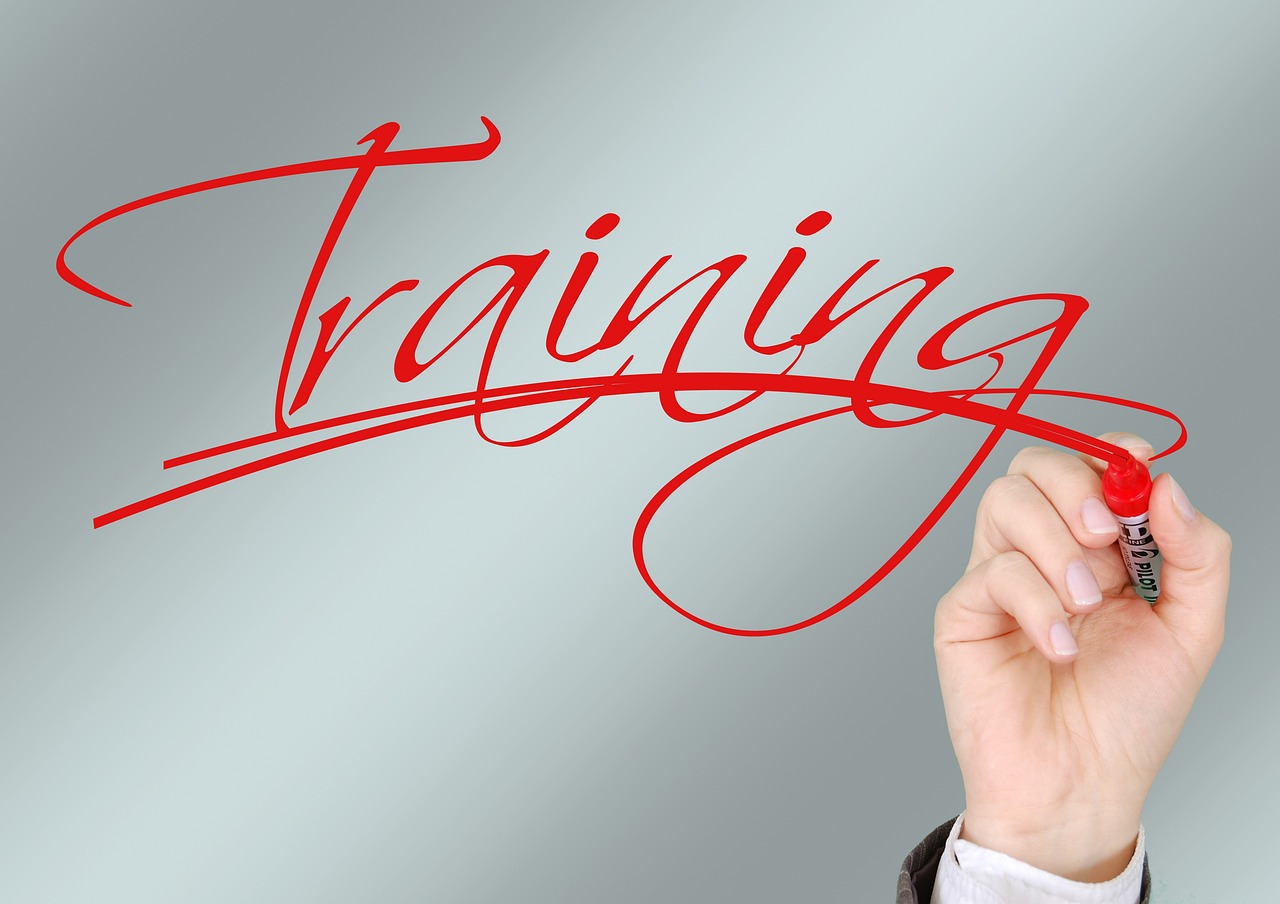
The Benefits of VR in Military Training
Virtual reality (VR) is revolutionizing the way military personnel train, offering a plethora of benefits that traditional methods simply can't match. Imagine being able to immerse yourself in a lifelike battlefield without ever leaving the safety of a training facility. That's the magic of VR! It provides an immersive experience that allows military teams to practice in environments that closely mimic real-world scenarios. This not only enhances their skills but also prepares them for high-pressure situations they might face in actual combat.
One of the most significant advantages of VR in military training is the ability to minimize risks. Traditional training methods often involve live-fire exercises or complex maneuvers that can lead to injuries or costly damages. With VR, teams can engage in realistic simulations without the associated dangers. This means they can focus on honing their tactical skills and decision-making processes without the fear of physical harm. Furthermore, the costs associated with equipment and resources for traditional training can be astronomical. VR significantly reduces these costs, making it an economically viable option for military organizations.
Moreover, VR training can be tailored to meet specific objectives and challenges that military teams face. Whether it's practicing urban warfare tactics, conducting reconnaissance missions, or coordinating air support, VR can simulate virtually any scenario. This flexibility allows for a more personalized training experience, ensuring that each team member can develop their skills in areas that need improvement. For example, a team might engage in a simulated hostage rescue operation, where they can practice communication and coordination in a safe yet realistic environment.
Another key benefit of VR training is the ability to provide immediate feedback. In a traditional training setup, it can take time to assess performance and identify areas for improvement. However, VR systems can integrate feedback mechanisms that offer real-time evaluations. This instant feedback loop helps military personnel understand their strengths and weaknesses, allowing them to adjust their strategies on the fly. Such an approach not only accelerates learning but also fosters a culture of continuous improvement.
In summary, the benefits of VR in military training are vast and varied. From enhanced realism and safety to cost-effectiveness and immediate feedback, VR is poised to transform how military teams prepare for the challenges ahead. By embracing this technology, military organizations can ensure that their personnel are better equipped to handle the complexities of modern warfare.
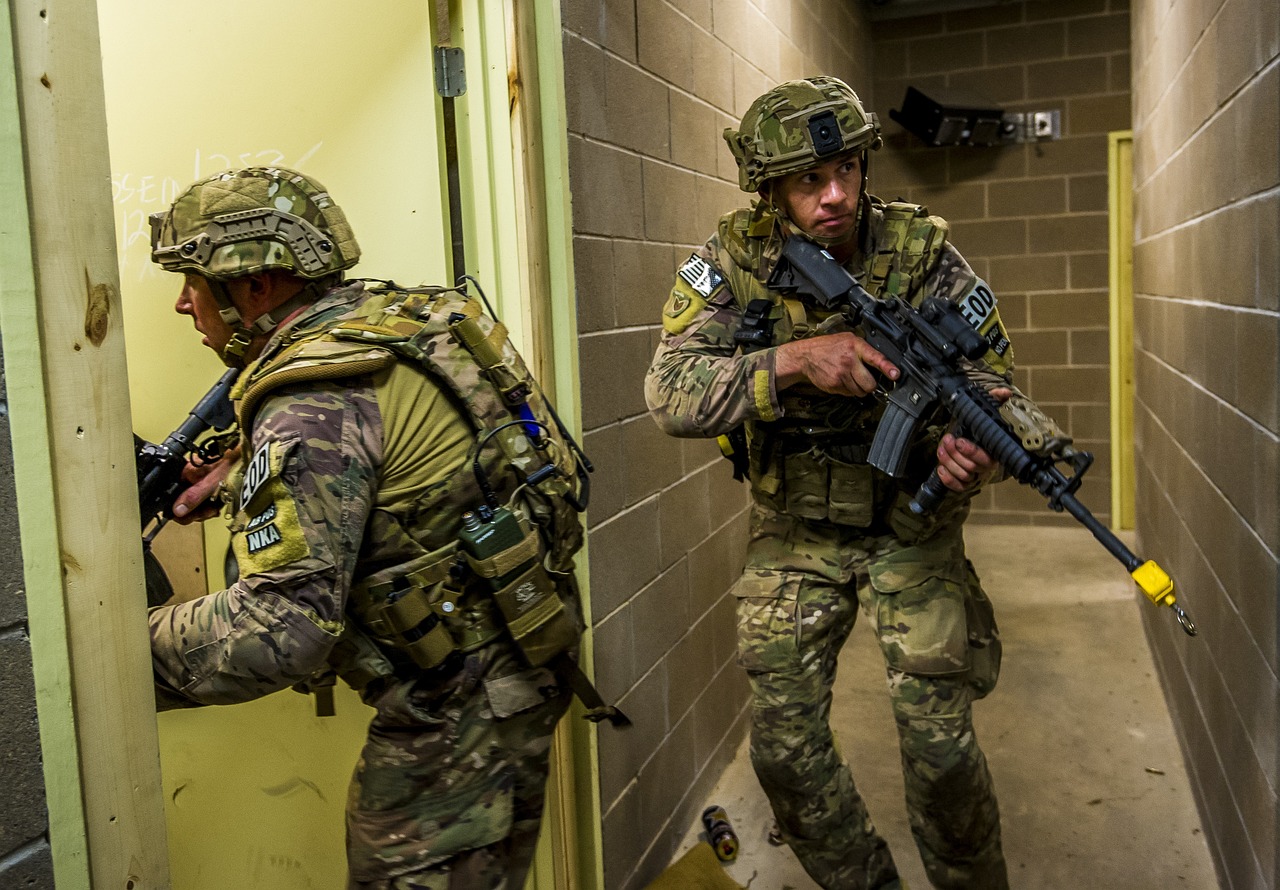
Designing Effective VR Training Scenarios
When it comes to military training, designing effective VR scenarios is not just a nice-to-have—it's a must-have. Imagine stepping into a virtual world where every detail mirrors real-life combat situations. That's the magic of VR! But how do we create these immersive experiences that truly prepare military personnel for what they might face in the field? It all boils down to understanding the unique needs of military teams and the specific objectives they aim to achieve. This section will dive into the essential elements that make VR training scenarios not only engaging but also effective.
The first step in crafting these scenarios is to ensure they are relevant to the military objectives at hand. This means collaborating closely with military experts to understand the intricacies of their operations. For instance, if a unit is preparing for urban warfare, the VR scenario should simulate a bustling city environment with realistic soundscapes and visual cues. By immersing soldiers in a context that reflects their mission, we enhance their ability to adapt under pressure.
Next, it’s crucial to incorporate realistic environments. The more authentic the VR setting, the better the training outcome. Techniques such as photogrammetry and 3D modeling can be employed to create lifelike simulations. For example, a training module could replicate a specific terrain that soldiers will encounter during deployment. This not only aids in familiarization but also helps build confidence. Imagine a soldier navigating through a virtual forest that feels as real as the one they will soon traverse in actual combat!
Moreover, feedback mechanisms play a pivotal role in the learning process. Integrating systems that provide instant evaluations can significantly enhance the training experience. After completing a scenario, soldiers can receive detailed reports on their performance, highlighting strengths and areas for improvement. This immediate feedback loop fosters a culture of continuous learning and adaptation, which is essential in military operations.
Another key aspect to consider is the dynamics of teamwork and communication within these VR scenarios. Military operations are rarely solo missions; they require seamless coordination among team members. VR training can simulate high-stress situations where effective communication is vital. By practicing in these environments, soldiers can refine their communication skills, learn to trust one another, and develop strategies that can be executed under pressure. Think of it as a virtual boot camp where every interaction is a chance to strengthen bonds and improve tactical execution.
In summary, designing effective VR training scenarios involves a blend of realism, relevance, and robust feedback mechanisms. By focusing on these elements, military training can evolve to meet the demands of modern warfare, ultimately leading to better-prepared soldiers. As we continue to explore the potential of VR, the possibilities for enhancing military training are truly exciting!
- What are the primary benefits of using VR for military training? VR provides immersive experiences that enhance learning, reduce risks, and allow for repeated practice in a controlled environment.
- How can feedback mechanisms be integrated into VR training? Feedback can be delivered through performance analytics and real-time assessments after each training session.
- Are VR training scenarios customizable? Yes, scenarios can be tailored to meet specific military objectives and team dynamics.
- What challenges might arise when implementing VR training? Challenges include technological limitations, costs, and the need for instructor training.

Incorporating Realistic Environments
When it comes to military training, the environment in which soldiers practice can make all the difference. Imagine trying to prepare for a high-stakes operation in a bland, sterile room versus a dynamic, lifelike simulation of a battlefield. The latter not only enhances engagement but also fosters a deeper understanding of the complexities involved in real-world scenarios. By into virtual reality (VR) training, military teams can experience the thrill, chaos, and unpredictability of actual missions, all while remaining safe.
Creating these immersive environments requires a blend of advanced technology and a clear understanding of military operations. For instance, utilizing geospatial data can help recreate authentic landscapes that soldiers might encounter during missions. This allows for a more genuine experience where trainees can familiarize themselves with the terrain, weather conditions, and potential obstacles they might face. Moreover, the integration of realistic soundscapes—like the distant rumble of artillery or the rustling of leaves—can elevate the training experience, making it not just visually stunning but also audibly immersive.
One effective method of achieving this realism is through the use of 3D modeling techniques. These techniques enable developers to create detailed replicas of both urban and rural settings, complete with buildings, vehicles, and even civilians. The more detailed and accurate the environment, the better prepared soldiers will be when they encounter similar situations in the field. For example, a VR simulation that accurately depicts a cityscape can help teams practice urban warfare tactics, allowing them to strategize and execute missions with greater efficiency.
Additionally, it's important to consider the psychological aspects of training in realistic environments. When soldiers are placed in scenarios that closely mimic real-life situations, they are more likely to experience the same stress and pressure they would face in an actual operation. This can lead to better decision-making and teamwork under pressure. However, it’s crucial to strike a balance; while realism is key, the training should also be designed to avoid overwhelming trainees, ensuring that they can learn and develop their skills effectively.
In summary, incorporating realistic environments into VR military training is not just about aesthetics; it's about creating a comprehensive learning experience that prepares soldiers for the challenges they will face. By leveraging advanced technologies and focusing on authenticity, military organizations can provide their teams with the tools they need to succeed in high-pressure situations. The result? A more competent, confident, and cohesive fighting force ready to tackle any mission that comes their way.
- What technologies are used to create realistic VR environments?
Technologies such as 3D modeling, geospatial data analysis, and advanced sound engineering are commonly used to create immersive VR training environments. - How does realistic training impact soldier performance?
Training in realistic environments enhances soldiers' decision-making, teamwork, and adaptability, preparing them for the stress and unpredictability of real-world operations. - Are there any risks associated with VR training?
While VR training is generally safe, it’s important to manage the intensity of simulations to prevent overwhelming trainees and ensure effective learning.

Utilizing 3D Modeling Techniques
In the realm of military training, the importance of realism cannot be overstated. This is where 3D modeling techniques come into play, transforming the way training environments are created and experienced. By harnessing the power of advanced 3D modeling, military organizations can design lifelike simulations that closely mimic real-world scenarios. Imagine a soldier navigating through a dense forest or strategizing in an urban warfare setting; these experiences become significantly more impactful when they are rendered in stunning detail.
The core of effective 3D modeling lies in its ability to create immersive environments that engage all the senses. For instance, the sound of rustling leaves, the sight of realistic terrain, and even the feel of the ground beneath a soldier's feet can be replicated, enhancing the overall training experience. This level of detail not only helps in building tactical skills but also fosters a deeper understanding of the environment in which military operations occur.
Moreover, 3D modeling allows for the inclusion of various training scenarios that can be tailored to specific objectives. Whether it's simulating a rescue mission in a hostile area or practicing communication strategies during a covert operation, the flexibility of 3D environments means that training can be customized to meet the unique needs of each unit. This adaptability is crucial in preparing soldiers for the unpredictable nature of real-life missions.
To illustrate the effectiveness of 3D modeling in military training, consider the following table that outlines some of the key advantages:
| Advantage | Description |
|---|---|
| Enhanced Realism | 3D environments provide a lifelike experience that improves engagement and retention of skills. |
| Customizable Scenarios | Training modules can be tailored to specific missions or objectives, ensuring relevance. |
| Safe Practice | Soldiers can practice high-risk scenarios without the dangers associated with real-life training. |
| Immediate Feedback | Real-time assessments can be integrated, allowing for instant performance evaluation and improvement. |
In addition to these advantages, 3D modeling techniques also enable the creation of collaborative training experiences. Soldiers can train together in a shared virtual space, regardless of their physical location. This feature is particularly beneficial for units that are geographically dispersed, allowing them to practice together and develop team cohesion even from afar. The collaborative aspect of 3D modeling not only enhances teamwork but also mirrors the dynamics of real military operations, where communication and coordination are key.
In conclusion, the utilization of 3D modeling techniques in military training is a game changer. By providing realistic, customizable, and collaborative training environments, these techniques help prepare soldiers for the complexities of modern warfare. As technology continues to evolve, the potential for even more advanced simulations is limitless, paving the way for a future where military training is as effective and engaging as possible.
- What is 3D modeling in military training?
3D modeling refers to the creation of lifelike simulations that replicate real-world environments for military training purposes.
- How does 3D modeling enhance training effectiveness?
It provides immersive experiences that improve engagement, retention of skills, and allows for safe practice of high-risk scenarios.
- Can 3D training scenarios be customized?
Yes, 3D modeling allows for the creation of tailored training modules that address specific missions or objectives.
- Is collaborative training possible with 3D modeling?
Absolutely! Soldiers can train together in shared virtual environments, fostering teamwork and communication.
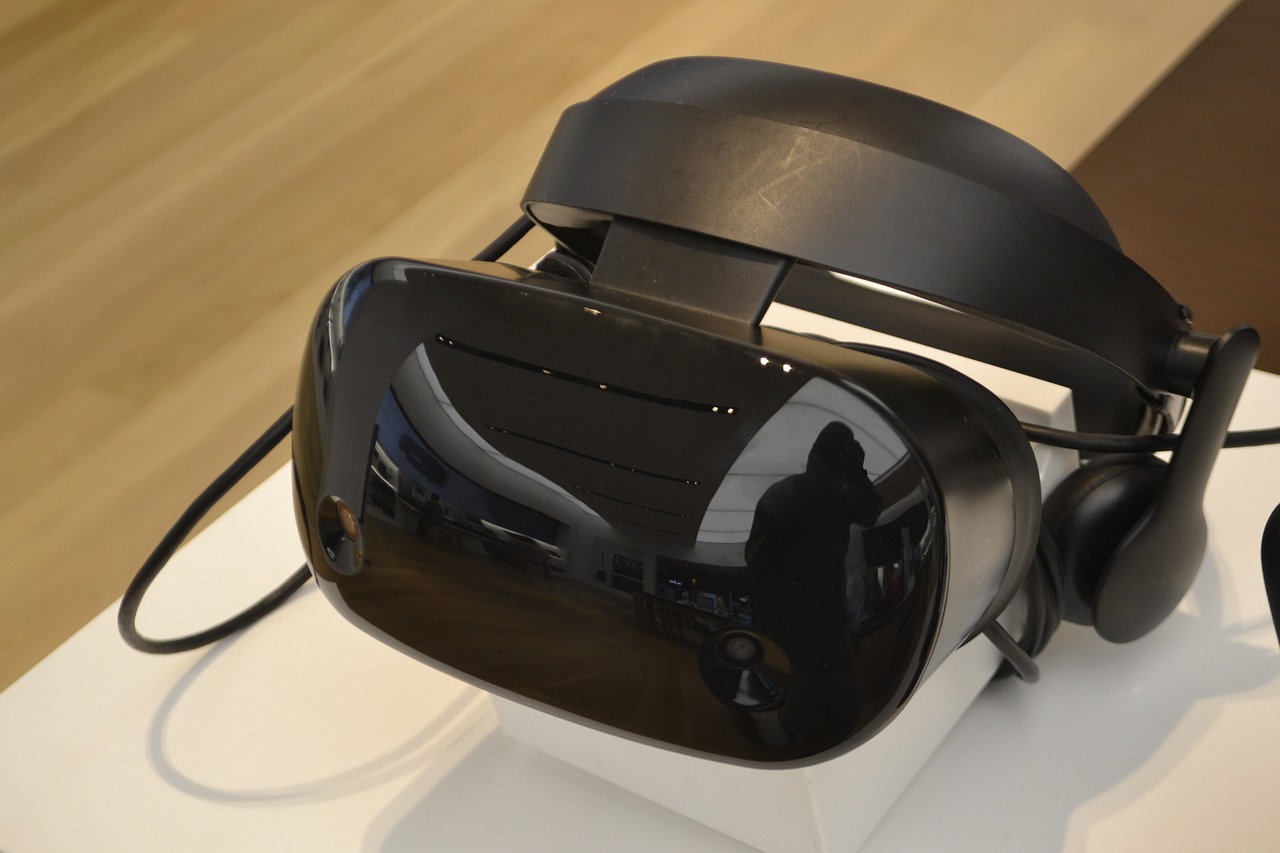
Feedback Mechanisms in VR Training
In the realm of military training, the integration of feedback mechanisms within virtual reality (VR) environments is nothing short of revolutionary. Imagine stepping into a training scenario where every action you take is met with immediate, constructive feedback. This is the essence of feedback mechanisms in VR training. They serve as a bridge between action and understanding, allowing soldiers to refine their skills in real-time, much like a musician tuning their instrument after each performance.
One of the most significant advantages of these feedback systems is their ability to provide instant performance evaluations. For instance, during a tactical simulation, if a soldier makes a decision that leads to a suboptimal outcome, the VR system can immediately highlight this misstep. This not only enhances the learning experience but also encourages quicker adaptation to changing scenarios. Instead of waiting for a debriefing session, soldiers can learn on the fly, making their training more effective and efficient.
Moreover, feedback mechanisms can be tailored to address specific objectives. For example, if a team is training for a mission that requires high levels of coordination, the VR system can track communication patterns and teamwork dynamics. After the exercise, soldiers can receive detailed reports on their performance, highlighting strengths and pinpointing areas that need improvement. This personalized feedback helps foster a culture of continuous learning and development.
To illustrate the effectiveness of these feedback systems, consider the following table that outlines different types of feedback mechanisms commonly used in VR training:
| Type of Feedback | Description | Benefits |
|---|---|---|
| Real-time Feedback | Immediate responses to actions taken during training. | Enhances learning speed and retention. |
| Performance Analytics | Detailed analysis of actions taken during simulations. | Identifies strengths and weaknesses for targeted improvement. |
| Peer Feedback | Input from fellow trainees on performance. | Promotes teamwork and collaborative learning. |
Additionally, incorporating gamification elements into feedback mechanisms can further engage soldiers. By introducing scoring systems, badges, or levels, trainees are motivated to improve their performance. This playful approach not only makes training more enjoyable but also instills a competitive spirit that can drive excellence.
In summary, feedback mechanisms in VR training are vital for developing military personnel's skills and teamwork. They provide immediate insights that help soldiers learn from their actions, fostering a culture of continuous improvement. As technology advances, the potential for these feedback systems to evolve and enhance training experiences will only grow, making them an indispensable tool in the military training arsenal.
- How do feedback mechanisms improve VR training outcomes?
Feedback mechanisms provide immediate insights into performance, allowing for real-time adjustments and learning, which enhances overall training effectiveness. - Can feedback be customized for different training scenarios?
Yes, feedback systems can be tailored to specific objectives, focusing on areas such as communication, decision-making, and teamwork. - What role does gamification play in feedback mechanisms?
Gamification introduces elements like scoring and rewards, making training more engaging and motivating soldiers to improve their performance.
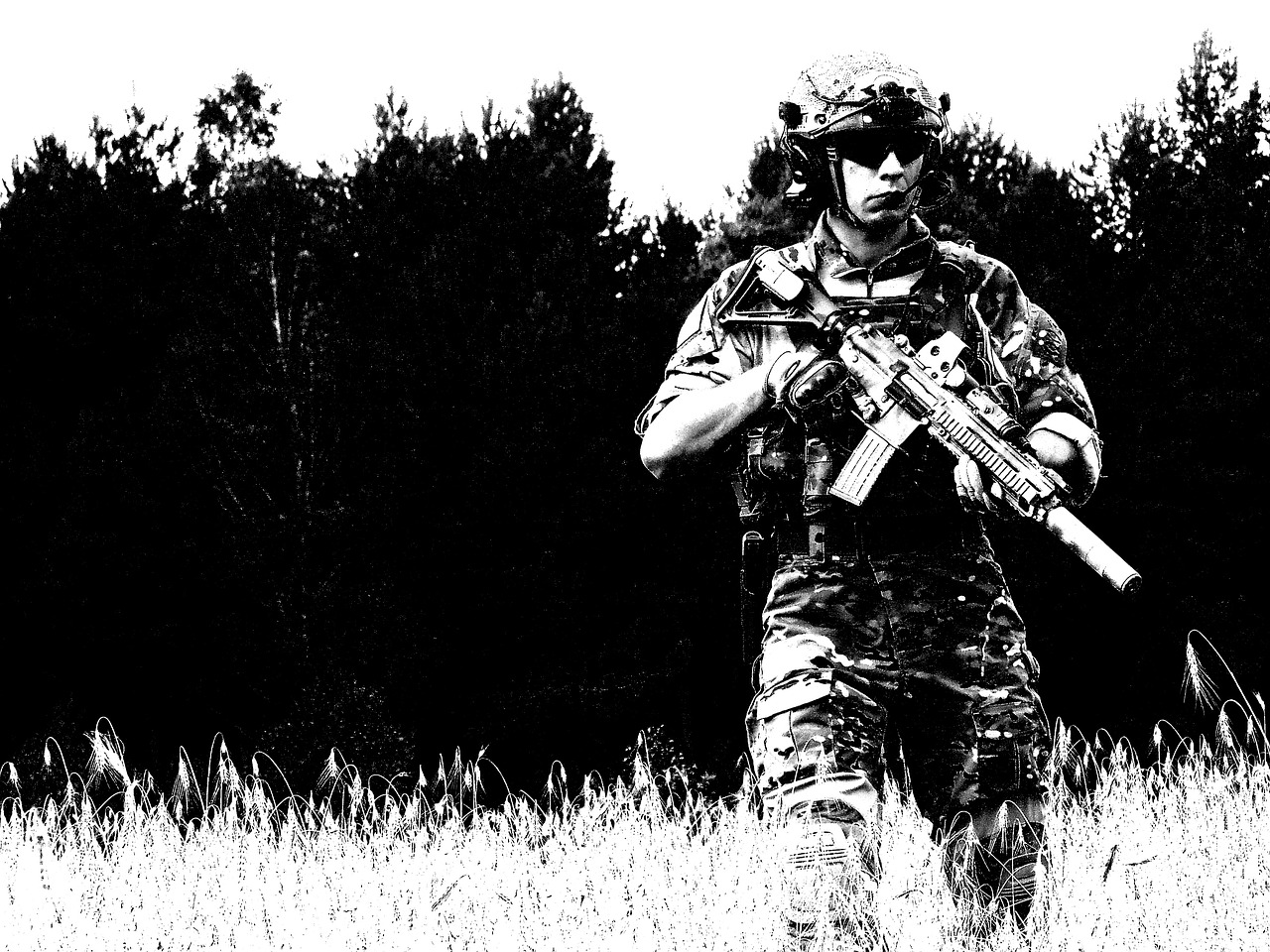
Team Dynamics and Communication
In the high-stakes world of military operations, effective communication is not just important; it can mean the difference between success and failure. Imagine a scenario where a team of soldiers is deployed in a high-pressure environment. They need to make split-second decisions, coordinate their movements, and respond to rapidly changing situations. This is where virtual reality (VR) training shines, providing a platform that not only simulates real-world challenges but also fosters crucial teamwork and communication skills.
One of the standout features of VR training is its ability to create immersive environments where team members can practice their communication strategies. In these simulations, soldiers can experience realistic scenarios that demand collaboration. For instance, a team might find themselves navigating a simulated battlefield where they must communicate their positions, share intel, and execute tactical maneuvers in sync. This kind of practice is invaluable because it mimics the stress and urgency of actual missions, allowing teams to refine their communication under pressure.
Moreover, VR training can highlight the importance of non-verbal cues, which are often just as critical as verbal communication in military settings. In a VR environment, soldiers can learn to read body language and facial expressions, enhancing their ability to gauge team members' states and intentions. This is akin to a dance where every movement counts; a misstep can lead to chaos, while a well-coordinated performance can lead to victory. Through repeated exposure to these scenarios, teams can develop a shared understanding and improve their overall dynamics.
Another significant advantage of VR training is the opportunity for real-time feedback. After each simulation, teams can debrief and analyze their performance, discussing what worked and what didn’t. This reflective practice encourages open dialogue and helps to build trust among team members. They can learn from each other's experiences, fostering a culture of collaboration and continuous improvement. Just like a sports team reviewing game footage, this process allows military personnel to identify communication breakdowns and strategize ways to enhance their teamwork.
Furthermore, VR training can accommodate various team configurations and roles, allowing individuals to step into different positions within the group. This flexibility helps personnel understand each other's responsibilities and challenges better, promoting empathy and cohesion. For example, a soldier might experience the pressures of a leadership role, gaining insight into the decision-making process and the importance of clear communication in guiding a team through complex tasks.
In conclusion, the integration of VR in military training offers a transformative approach to enhancing . By providing realistic scenarios that mimic the pressures of actual operations, VR not only prepares soldiers for the battlefield but also cultivates essential skills that can lead to more effective and cohesive teams. As military organizations continue to embrace this technology, the potential for improved communication and collaboration among personnel is bound to grow, ultimately leading to better mission outcomes.
- What is the primary benefit of VR training for military teams?
VR training enhances teamwork and communication skills by simulating high-pressure scenarios that require collaboration. - How does VR training improve communication skills?
It allows soldiers to practice in realistic environments, focusing on both verbal and non-verbal communication, and providing real-time feedback. - Can VR training be customized for different military operations?
Yes, VR scenarios can be tailored to mirror specific missions, ensuring relevance and effectiveness in training. - What challenges might arise with VR training?
Challenges include technical limitations, costs, and the need for proper training for both instructors and participants.

Challenges in Implementing VR Training
While the potential of virtual reality (VR) in military training is immense, the journey to fully integrating this technology is not without its hurdles. One of the primary challenges is the technological limitations that can disrupt the training experience. Imagine gearing up for an intense simulation, only to face lagging graphics or connectivity issues. Such technical setbacks can lead to frustration and diminish the training's effectiveness. It's crucial for military organizations to invest in robust hardware and software solutions that can withstand the demands of high-pressure training environments.
Another significant challenge is the cost associated with VR training. Developing high-quality VR scenarios and acquiring the necessary equipment can require substantial financial investment. However, when considering the long-term benefits—such as reduced risks during live training exercises and improved soldier readiness—many organizations find that the initial costs can be justified. A comprehensive cost-benefit analysis can help military leaders weigh the upfront expenses against the potential savings and enhancements in training outcomes.
Moreover, there is a pressing need for proper training for instructors and participants. Just like any new tool, VR requires a learning curve. If instructors are not well-versed in how to operate the technology or design effective simulations, the training could fall short of its objectives. Military teams must ensure that both trainers and trainees are adequately prepared to utilize VR effectively. This can involve dedicated workshops, ongoing support, and a culture of continuous learning.
In addition to these challenges, there is often a cultural resistance to adopting new technologies within military ranks. Some personnel may be skeptical about the effectiveness of VR compared to traditional training methods. Overcoming this resistance requires a concerted effort to demonstrate the advantages of VR training through pilot programs and success stories. Engaging personnel in the development and implementation process can also foster a sense of ownership and acceptance of the new technology.
Lastly, as with any technological integration, there are potential security concerns related to VR training. Ensuring that sensitive military data is protected during simulations is paramount. Military organizations must work with cybersecurity experts to establish protocols that safeguard information while allowing for effective training environments. This might include encrypting data transmitted during VR sessions and ensuring that systems are secure from external threats.
In summary, while the challenges of implementing VR training in military settings are significant, they are not insurmountable. With careful planning, investment, and a willingness to adapt, military organizations can harness the full potential of VR to enhance training outcomes and prepare their teams for the complexities of modern warfare.
- What are the main benefits of using VR in military training?
VR provides immersive experiences, allowing teams to practice in realistic environments while minimizing risks and costs associated with traditional training methods. - How can military organizations overcome the cost of implementing VR training?
Conducting a cost-benefit analysis can help justify the initial investment by highlighting long-term savings and improved training outcomes. - What steps can be taken to ensure instructors are trained in VR technology?
Providing dedicated workshops and ongoing support can help instructors effectively utilize VR tools in their training programs. - How can military organizations address cultural resistance to VR training?
Engaging personnel in the development process and showcasing successful pilot programs can help foster acceptance of VR technology. - What security measures should be implemented in VR training?
Establishing protocols for data encryption and cybersecurity can help protect sensitive information during VR simulations.

Technical Limitations and Solutions
When it comes to implementing Virtual Reality (VR) training in military contexts, several technical limitations can pose significant challenges. One of the primary issues is the hardware requirements. High-quality VR experiences demand powerful computers and advanced headsets, which can be prohibitively expensive. Additionally, not all military facilities are equipped with the necessary infrastructure to support these technologies. This can lead to inconsistencies in training experiences across different units.
Another limitation is the software compatibility. Many VR training programs require specific operating systems and configurations, which can complicate deployment. Imagine trying to orchestrate a large-scale training exercise only to find that the software doesn't function on all the available machines. This situation can lead to frustration and wasted resources.
Moreover, there are concerns about motion sickness among users. Some individuals may experience discomfort while using VR, which can detract from the overall training experience. This is particularly concerning in military training, where focus and performance are paramount. To mitigate this, developers are continuously working on improving the user experience by refining motion tracking and reducing latency.
To tackle these challenges, military organizations can consider several solutions:
- Investment in Infrastructure: Allocating budget for state-of-the-art VR equipment and ensuring that facilities are equipped to handle advanced technology is crucial. This can mean upgrading existing systems or building new training centers specifically designed for VR.
- Standardization of Software: Adopting a standardized software platform can help streamline the deployment process. This ensures that all units are using compatible systems, which can enhance collaboration and training consistency.
- Training for Instructors: Providing comprehensive training for instructors on how to use VR technology effectively can alleviate many technical issues. Well-trained staff can troubleshoot problems quickly, minimizing downtime during training sessions.
- User Experience Enhancements: Developers should focus on optimizing VR applications to reduce motion sickness. This includes improving frame rates, minimizing latency, and offering customizable settings for users to adjust their experience according to their comfort levels.
By addressing these technical limitations head-on, military organizations can create a more effective and efficient VR training environment. The investment in technology and training will ultimately pay off in improved readiness and performance on the battlefield.
Q: What are the main technical challenges in VR training for military teams?
A: The main challenges include hardware requirements, software compatibility, and user discomfort due to motion sickness. Addressing these issues is essential for successful implementation.
Q: How can military organizations mitigate the risk of motion sickness in VR training?
A: Organizations can mitigate this risk by using high-quality VR systems, optimizing the software for better performance, and allowing users to customize their settings for comfort.
Q: Is VR training cost-effective for military organizations?
A: While the initial investment can be high, the long-term benefits, such as improved training outcomes and reduced risks associated with traditional methods, often justify the costs.

Cost-Benefit Analysis of VR Training
When it comes to adopting new technologies in military training, the cost-benefit analysis of virtual reality (VR) training is a critical consideration. On one hand, the initial investment in VR technology, including hardware, software, and training development, can seem daunting. However, when you look deeper, the long-term benefits often outweigh these upfront costs. Think of it like investing in a high-quality pair of boots for a long hike; while they might be pricey at first, they can save you from discomfort and injury down the line.
One of the most significant advantages of VR training is the ability to conduct repetitive training scenarios without the logistical nightmares associated with traditional methods. For example, consider the costs associated with live-fire exercises: ammunition, equipment wear and tear, and the potential for accidents. With VR, these expenses are drastically reduced. In fact, a study by the U.S. Army Research Laboratory found that VR can cut training costs by up to 30% when compared to conventional training methods.
Moreover, VR training can lead to improved readiness and efficacy of military personnel. By providing a safe environment to practice high-stress scenarios, soldiers can enhance their decision-making and tactical skills. This not only prepares them better for real-life situations but also reduces the likelihood of costly mistakes during actual operations. The potential reduction in operational costs due to better-prepared troops can be substantial.
To illustrate the financial implications, let's take a look at a simple
| Training Type | Initial Costs | Ongoing Costs | Potential Savings |
|---|---|---|---|
| Traditional Training | $100,000 | $50,000/year | N/A |
| VR Training | $150,000 | $20,000/year | $30,000/year |
This table highlights how, despite a higher initial investment in VR training, the ongoing costs are significantly lower, leading to substantial savings over time. Additionally, the enhanced training capabilities can lead to better overall performance, which is invaluable in military operations.
In conclusion, while the upfront costs of implementing VR training systems can be high, the long-term benefits—ranging from reduced operational costs to improved soldier readiness—make it a compelling investment. By carefully analyzing these factors, military organizations can make informed decisions that not only enhance training effectiveness but also ensure fiscal responsibility.
Now, let's address some Frequently Asked Questions regarding the cost-benefit analysis of VR training:
- What are the main costs associated with VR training? The primary costs include the purchase of hardware and software, development of training scenarios, and ongoing maintenance and updates.
- How can VR training reduce costs in the long run? By minimizing the need for physical resources, reducing accidents, and improving training efficiency, VR training can lead to significant savings over time.
- Is the effectiveness of VR training proven? Yes, numerous studies have shown that VR training can enhance skills and readiness, often outperforming traditional training methods.
Frequently Asked Questions
- What are the main benefits of using VR in military training?
Virtual reality (VR) offers a multitude of benefits for military training, such as creating immersive environments that enhance teamwork and decision-making. It allows teams to practice in scenarios that closely mimic real-life situations while reducing risks and costs associated with traditional training methods.
- How are effective VR training scenarios designed?
Designing effective VR training scenarios involves understanding military objectives and team dynamics. Key elements include incorporating realistic environments, using advanced 3D modeling techniques, and ensuring that scenarios are engaging and relevant to the tasks at hand.
- Why is realism important in VR training environments?
Realism is crucial because it enhances immersion and learning. When soldiers train in environments that closely resemble actual military operations, they are better prepared for high-pressure situations, leading to improved performance during real missions.
- What role do feedback mechanisms play in VR training?
Feedback mechanisms provide instant performance evaluations, allowing teams to identify areas for improvement. This immediate feedback helps enhance learning and fosters a growth mindset among participants, making the training process more effective.
- How does VR training improve team dynamics and communication?
VR training creates simulated high-stress situations where effective communication is vital. By practicing together in these environments, military personnel can strengthen their teamwork and communication skills, which are essential for successful operations.
- What challenges are associated with implementing VR training?
Some challenges include technological limitations, high costs, and the necessity for proper training for both instructors and participants. Addressing these challenges is crucial for the successful integration of VR technology into military training programs.
- What are common technical limitations in VR training?
Common technical limitations may include hardware malfunctions, software compatibility issues, and the need for high-performance computing resources. Identifying these issues early on and implementing appropriate solutions can help ensure a smooth training experience.
- How can military organizations evaluate the cost-benefit of VR training?
Organizations can conduct a cost-benefit analysis by comparing the long-term benefits of VR training, such as improved readiness and reduced training costs, against the initial investment required for technology and setup. This analysis helps in making informed decisions.

